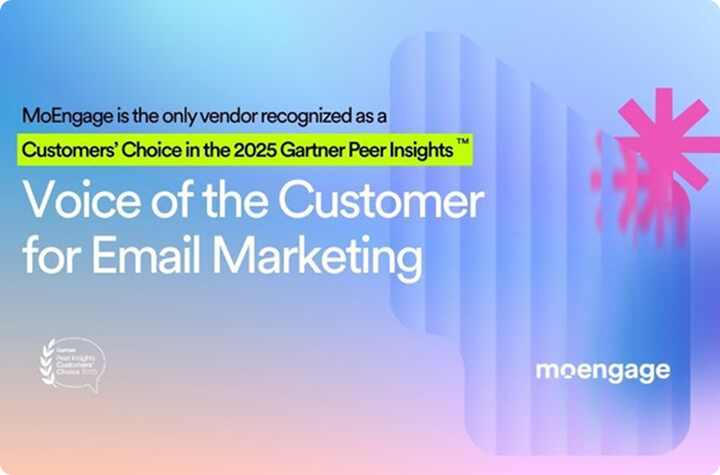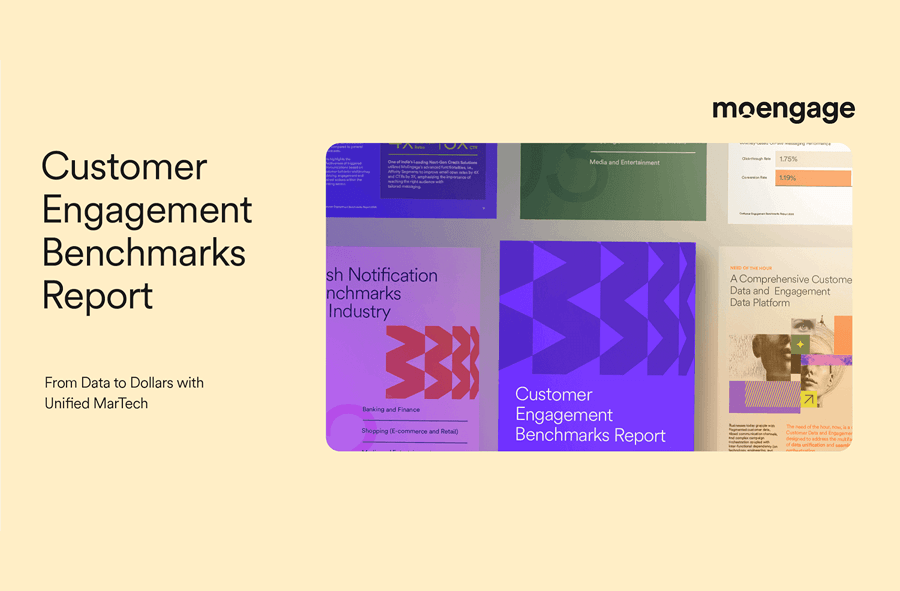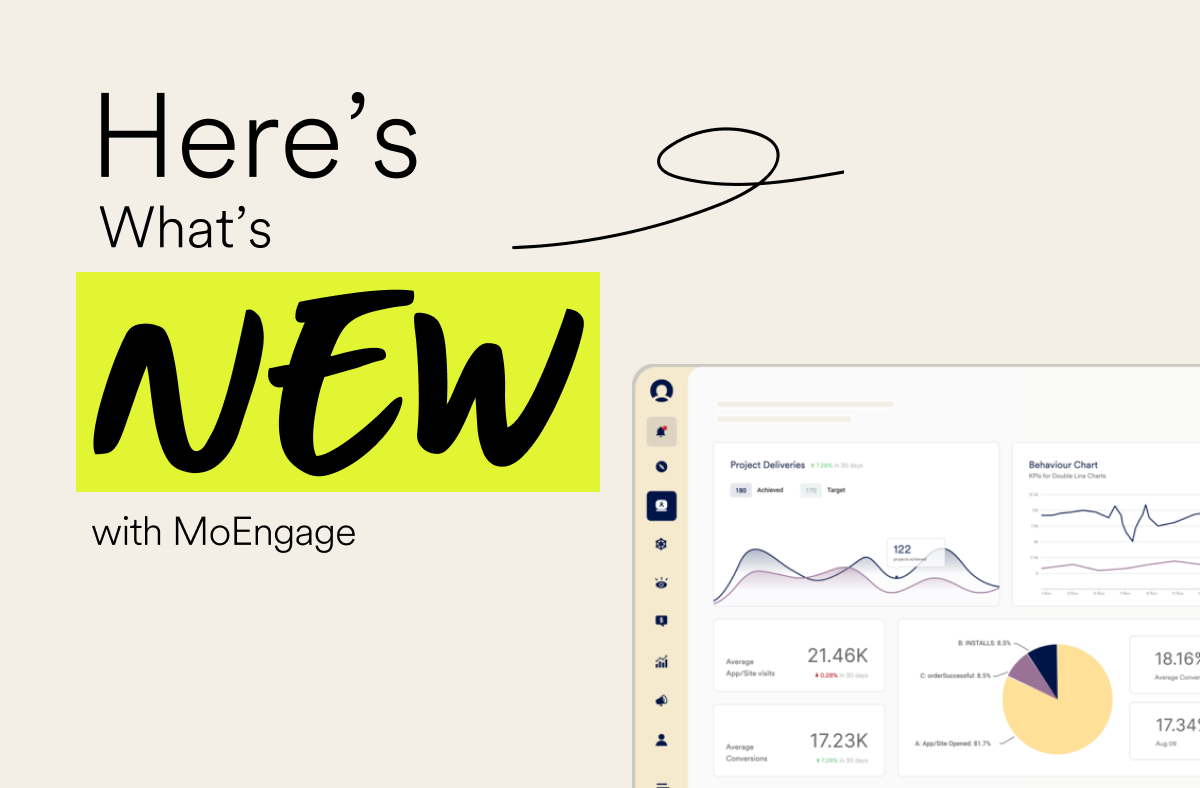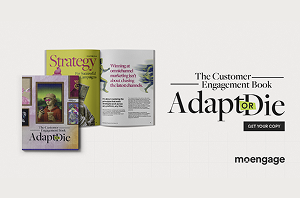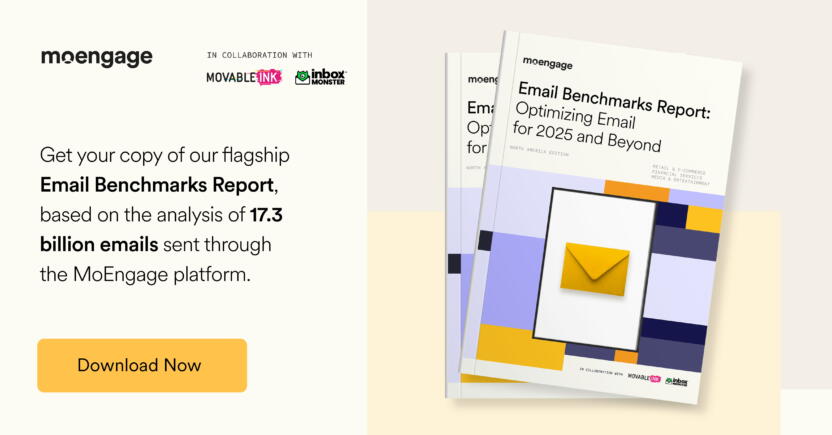How to Create an Email Newsletter That Stands Out
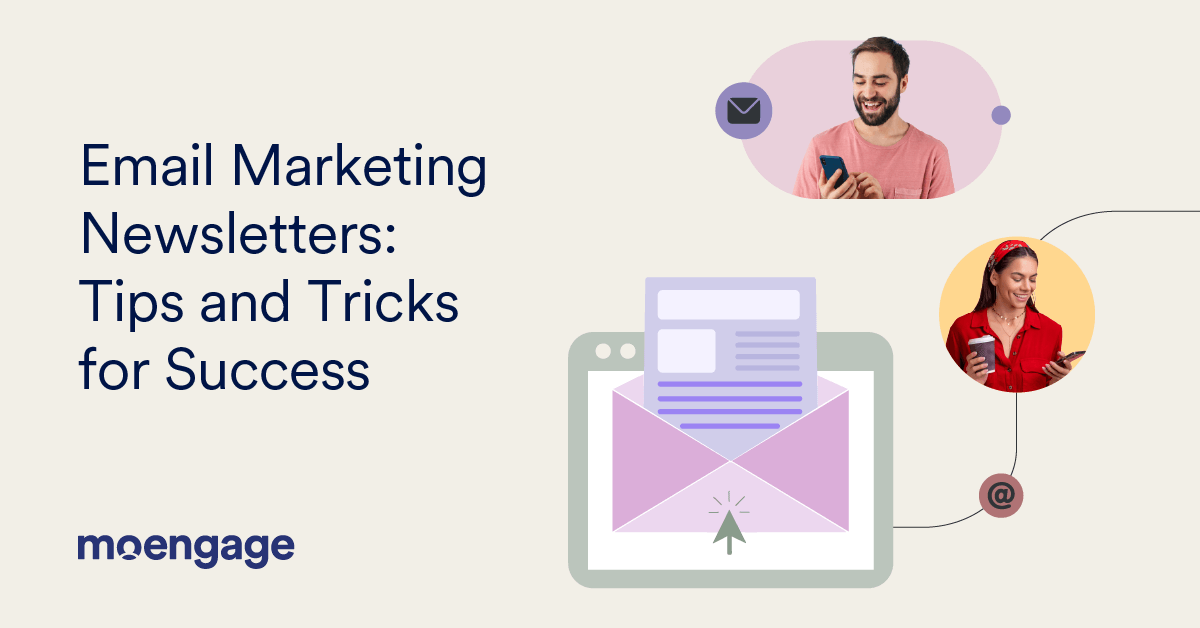
Reading Time: 12 minutes
Email newsletters are a critical aspect of a B2C marketer’s arsenal. No matter your industry, you should know how to create an email newsletter that can ultimately grow your brand. You can send various newsletters, such as actionable advice, tips based on scientific research, interviews with industry experts, growth hacks for a business, expert marketing knowledge, or a collection of best articles.
Let’s look at how marketers can optimize their email newsletter strategy. We’ll also discuss a few best practices and resources for understanding your audience, creating click-worthy content, getting quick hits, optimizing newsletter design, and enhancing email deliverability.
What Is An Email Newsletter?
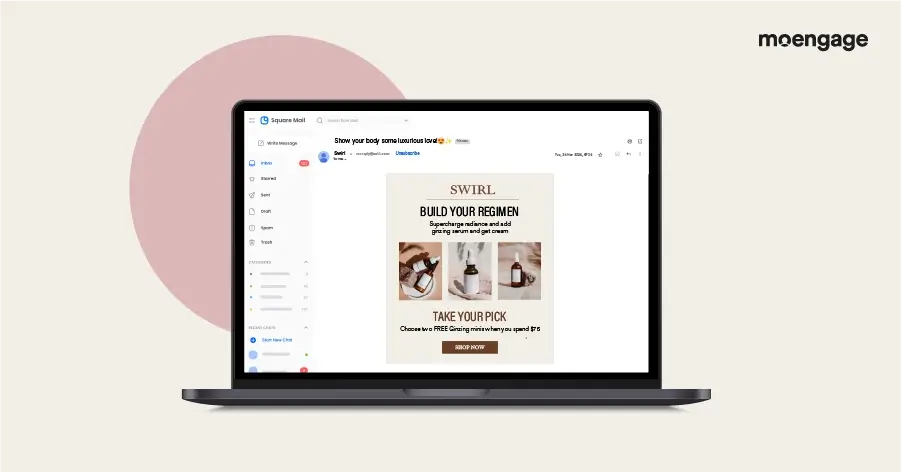
An email newsletter is a periodic email sent to customers at daily, weekly, monthly, or pre-determined intervals to communicate directly with them, engage them, and retain them. Conversion rates of email marketing newsletters are much higher than other types of emails sent, because these newsletters often contain information that’s essential to their reader base. They also follow email engagement best practices.
Brands can send a daily newsletter or get readers to subscribe to a weekly email. This cadence isn’t set in stone and can be adjusted based on the needs of your audience and your digital marketing or content strategy.
Why Are Email Newsletters Important?
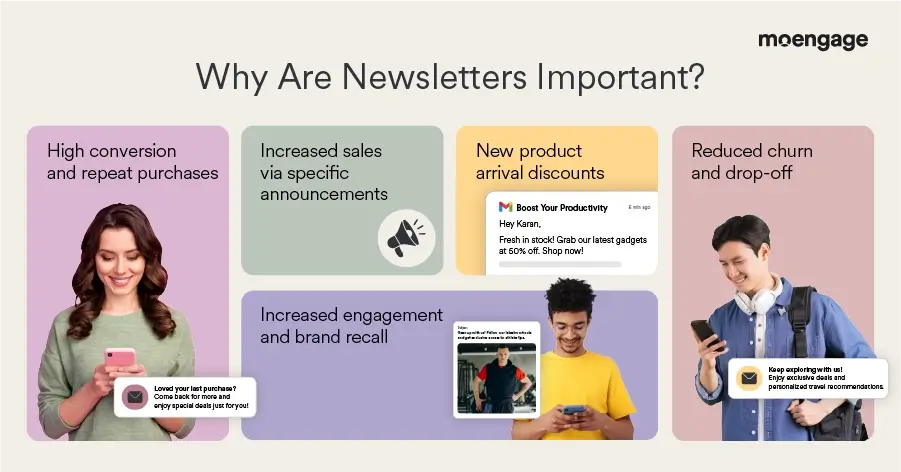
Brands should incorporate newsletters into their email strategy because this is a powerful medium that can help brands continuously engage with their customers. You should know how to create an email newsletter to drive:
- High conversions and repeat purchases
- Increased sales via specific announcements
- New product arrival discounts
- Increased engagement and brand recall
- Reduced churn and drop-off
So, what’s the secret sauce for creating the best email newsletters?
How to Create an Email Newsletter
Creating an effective email newsletter is crucial for building lasting customer relationships. That’s why you need to get all the elements right. Below, we’ve compiled a list of the top 8 things you need to do to write an engaging email newsletter and hit it off with your subscribers.
- Understand your audience
- Craft engaging content
- Optimize newsletter design
- Check email timing and frequency
- Manage your email list
- Write engaging subject lines and preheaders
- Do A/B testing and optimization
- Ensure email deliverability and compliance
Let’s explore these steps in detail.
Understand Your Audience
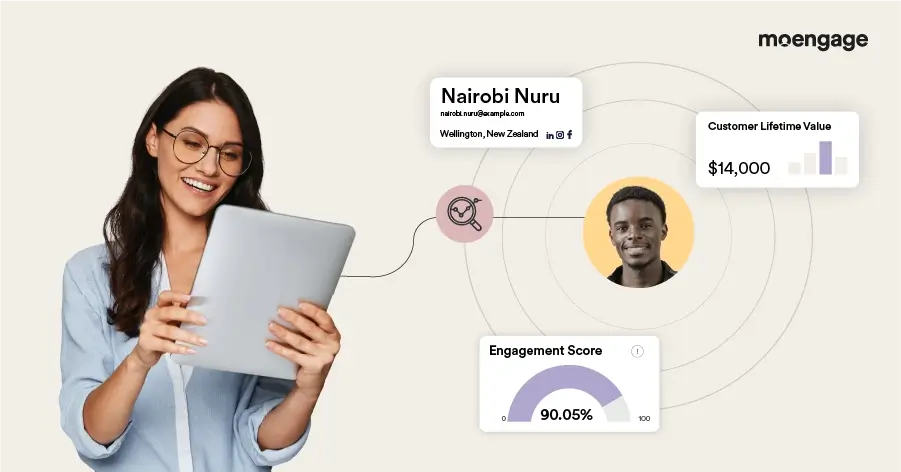
Brands often limit personalization to starting the email with ‘Hi <first name>’. However, according to marketing expert Seth Godin, mass personalization is a trap. It doesn’t appear genuine. If you want your audience to click on the email newsletter, go beyond addressing them by their first name. Understand your audience well enough to tailor the email content.
Audience segmentation can help you understand and group your audience based on their demographics (age, gender, location), behavior patterns (purchasing history and browsing patterns), and interests. If you’ve got a lot of new leads, send them a different type of marketing newsletter. If your business has many loyalists, you can consider sending them a daily newsletter.
You can use this to tailor the content for each segment and increase the clickthrough rate (CTR), engagement, and sales by delivering the right message at the right time. It’s an unbeaten strategy to connect with customers and drive desired results.
Craft Engaging Content
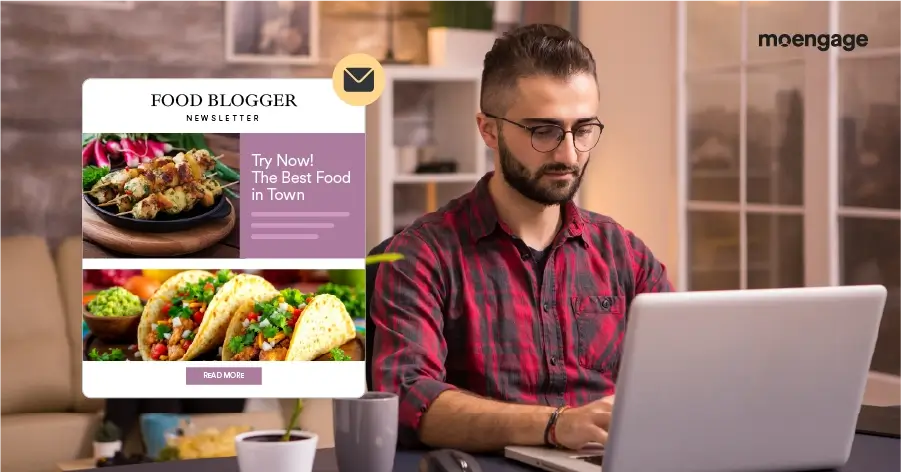
Good content is the foundation of a successful email newsletter. It is the main reason for consumers to open an email. Ensure that your marketing newsletters are nicely designed, informative, and engaging. To start with, you can experiment with many marketing newsletter types, including customer relationship emails.
Here’s what to include in your email newsletter:
- Blog posts: Send a curated list of your most relevant, originally published blog posts. If you’ve got a weekly newsletter, you can try to maintain a theme for each week. Add links to each blog post, drive traffic to your website, and showcase thought leadership via your blog.
- Guides: You can send step-by-step guides and free resources on using your products or how to solve a problem. The objective is to demonstrate your expertise in the subject area. For example, if you manage an insurance brand, consider sending a guide on choosing the right health insurance plan for you and your family.
- Discounts, promotion codes, and contest invitations: You can send coupon codes and special discounts or invite readers to participate in contests in a weekly newsletter. This might help convert subscribers who are on the fence about certain products.
- User-generated content (UGC): The best way to foster a sense of connection among readers is to share user-generated content, such as the success stories of other readers, with them. This will boost the customer’s confidence in the brand and help them engage more with your content. For example, fitness brands can share personal transformation stories of other clients to motivate them to stay fit.
- Video content: Using videos is winning half the battle of knowing how to create an effective email newsletter. Customers can retain information better in video format than text. Include videos in newsletters, especially if you send an email about new product features, customer testimonials, or tutorials. You can also promote these across your social media feeds.
- Industry updates: To help readers stay updated, you can send information about the latest trends and updates in the industry along with industry news. These can provide readers with business updates if required, but if you want to keep it fun and engaging, you can also consider including relevant pop culture updates.
- New launches: You can send these marketing newsletters to inform your customers about new product launches or new features in existing products. Creating an email newsletter about product launches will motivate recipients to try the latest product or increase the usage of the existing one.
- Business news and announcements: You can share regular updates about your business through a weekly newsletter. Include information about new acquisitions, client wins, marketing trends or the latest marketing news and partnerships, to maintain transparency and boost confidence in your brand.
Apart from experimenting with content types, add compelling headlines and visuals to the newsletter. A good headline can quickly grab attention and create a first impression about the brand in the customer’s mind. Keep it simple and concise, and use a mix of emojis, action words, symbols, and numbers to make it interesting.
Additionally, use high-quality videos and images and ensure enough white space in the emails to make them look clutter-free. This will improve the readability of your marketing newsletter.
Finally, ensure consistency in brand voice and use a tone and style that aligns with branding guidelines and resonates with your audience.
Optimize Newsletter Design
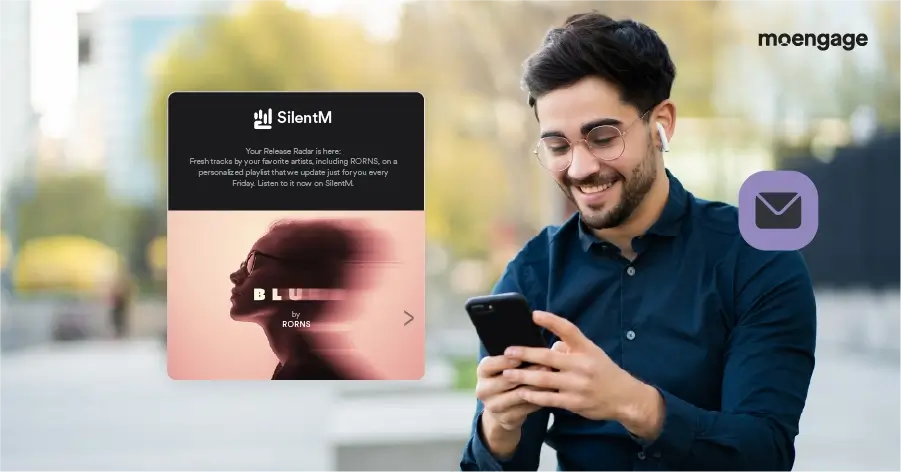
Here are some growth strategies to optimize your newsletter covers and design to increase readability across your marketing campaigns:
1. Implement Email Newsletter Best Practices to Make Them Visually Appealing
- Don’t add too much text to your email newsletter. Break the monotony by strategically placing high-quality images between text. Ensure a proper text-image ratio and test if it loads fast on all devices.
- Keep UI/UX in mind while choosing an email template. Ensure it is accessible on all devices and aligns with your brand’s guidelines. Take signals from the best marketing newsletters and leverage pre-made templates to ensure your newsletters don’t feel overwhelming.
- Speaking of content, keep the content concise to avoid scrolling. Make it scannable and use fonts, font sizes, and font colors that are easy to read on all devices.
- Choose a responsive design for your email newsletter. This ensures that your email is accessible on all devices and subscribers can read it without any issues.
- Don’t add too much text to your marketing newsletter. Break the monotony by strategically placing high-quality images between text. Ensure a proper text-image ratio and test if it loads fast on all devices.
2. Use Clean and Clutter-free Layouts, Typography, and Attractive CTAs
- Consider an inverted pyramid structure for your newsletter layout. The inverted pyramid structure comprises a header, content, images, CTA, etc. This type of layout will guide your audience to the CTA button.
- If you have a lot of content or images to cover, use the angular, zig-zag format. This will make your email newsletter look more visually appealing and less chaotic.
- Avoid cluttering your newsletter with too many elements. Segregate content into relevant sections and use web-safe fonts like Arial, Verdana, Times New Roman, and Courier, as they are readable on all devices.
- Remember to include eye-catching call-to-action (CTA) buttons that lead back to relevant landing pages. Make them visible and enticing using bright colors and short, impactful action words such as “download for free” or “contact us.” The objective is to nudge the reader to take a desired action.
3. Don’t Forget the Unsubscribe Button
The best way to build trust among your readers is to create an email newsletter that includes an unsubscribe button, regardless of the nature of the email.
An unsubscribe option implies that the reader can opt out of your marketing newsletter anytime. Not giving them the option to unsubscribe could damage your brand’s reputation.
Ensure the unsubscribe button is clearly visible on the footer of your email marketing newsletter and doesn’t involve a lengthy opt-out process. Ideally, it should not take more than 1-2 clicks to unsubscribe.
You can also give the option to update email preferences and receive only selective emails from your ID. This can help reduce churn and improve customer retention.
Timing and Frequency
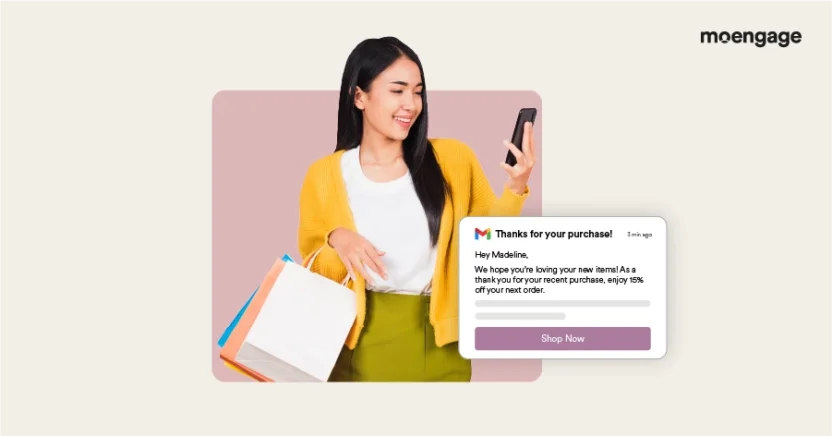
According to MoEngage’s Personalization Pulse Check report, 23.4% of consumers prefer to receive messages and communications from brands once a week. Too many or too few emails can either overwhelm or alienate your readers. Similarly, sending an email newsletter at midnight or on the weekend might not get you the expected CTR or open rates. That’s why it’s vital to get the timing and frequency correct, if you want to understand how to create an email newsletter.
1. Timing of Email Marketing Newsletters
According to Campaign Monitor’s research, a weekday is the right day to send an email newsletter. The research shows slightly lower open rates during weekends compared to weekdays. It further indicates that most emails are opened between 9 a.m. and 5 p.m., with 3 p.m. being the peak time.
2. Email Newsletter Frequency
While MoEngage’s research on email marketing strategy shows that once a week is the ideal frequency for sending email newsletters, a lot depends on factors like industry benchmarks and the average open and unsubscribe rates. If your unsubscribe rates are high, it could mean that readers are overwhelmed by the frequency of emails. The ideal way to determine what frequency works best is to experiment with email scheduling and analyze the open, clickthrough, and unsubscribe rates.
3. Test And Measure Results
The best email newsletter shoots to the top because of a culture of testing and analysis. Here are a few crucial metrics to measure to analyze your marketing newsletter:
- Open rates: This helps marketers understand how many consumers opened their emails.
- Clickthrough rates: CTR measures how many readers clicked on a link or took some action after opening your email. This is a crucial metric for understanding newsletter performance.
- Unsubscribe rates: Keep checking your unsubscribe rates. If they are high, revisit your email campaigns and experiment with the timing and frequency of the newsletter.
Use industry benchmarks to measure the performance of email newsletters, as the success metrics vary for different industries. This will help marketers set the right expectations based on industry standards and local marketing trends.
List Management
Imagine unsubscribing from an email newsletter and still receiving them regularly. Sounds frustrating, doesn’t it? Often, marketers don’t look at their subscriber’s list. They send emails that either bounce or are irrelevant to recipients. To avoid such problems, marketers must manage their lists regularly and segment audiences.
Maintain a Clean and Updated Email list
A clean and updated list serves two primary benefits for marketers:
- First, it improves email deliverability. A clean list reduces the number of bounces and improves the sender’s reputation. This eventually helps land the emails directly in the subscribers’ inboxes, improves the open rates and CTR, and enhances the campaign’s performance.
- Second, it helps marketers save costs on inactive or dormant readers, optimize the email marketing budget, and maintain communication only with engaged readers.
Write Engaging Subject Lines and Preheaders
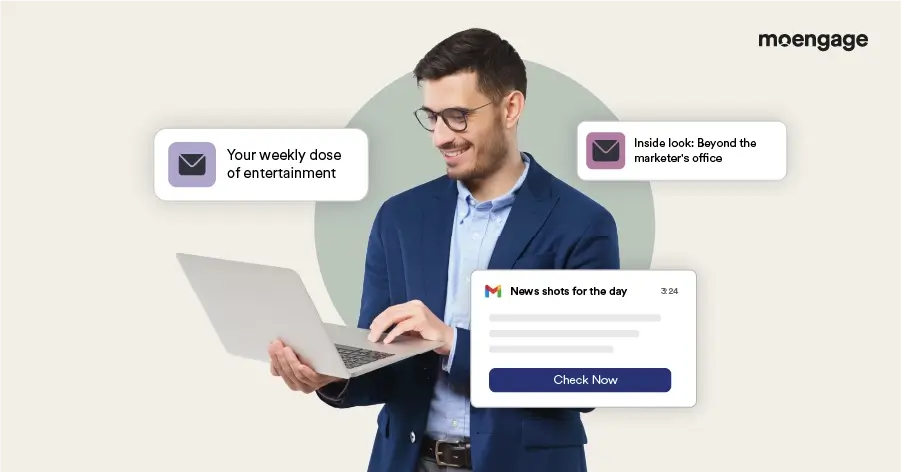
Learning how to write an email newsletter is incomplete if you don’t know how to write the best subject lines. A subject line is the headline of your email that the subscriber notices first. A campaign’s performance depends mainly on the subject line. Meanwhile, a preheader is a short snippet next to or below the subject line in the inbox preview.
We’ve analyzed the best marketing strategies and content marketing guidelines to list out techniques for optimizing subject lines and preheaders below.
1. Copywriting Tips for Subject Lines
- Keep the subject line short and concise to optimize it for mobile viewing
- Keep it relevant to the email’s content
- Add emojis to attract attention, but don’t overdo them
- Tailor the subject line to include the subscriber’s name or interest
- Avoid using too many capital words or special characters to prevent from being considered a spam email
2. Growth Hacks for Preheaders
- Don’t repeat the subject line in your preheader
- Offer a follow-up to the subject line or unique information in the preheader
- Summarize the email’s content or give a preview
- Keep the preheader short and use language that intrigues or teases the subscriber’s curiosity
- Reveal limited-time offers or exclusive information to generate curiosity and urgency
- Reference the best email newsletter examples from your inbox to get an idea of good preheaders
3. Use Personalization, Urgency, and Intriguing Language
- Tailor your subject lines by including data like subscriber’s name, preference, or past behavior to generate curiosity and boost open rates and CTR
- Use action-oriented verbs or time-sensitive language, such as ‘limited offer’ or ‘act now’ to create a sense of urgency
- Use humor, strong verbs, and creative wordplay to grab subscriber’s attention and make the email newsletter stand out from the rest of them
A/B Testing and Optimization
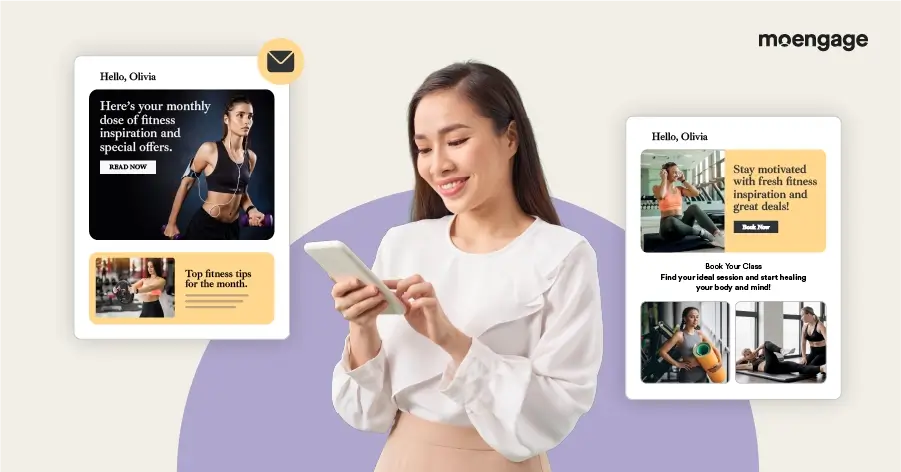
A/B testing is a crucial part of knowing how to create an email newsletter. Marketers must regularly perform A/B testing of marketing newsletters to improve performance and results. This optimization is critical to digital marketing and facilitates experimentation with different elements. Here’s how you can do A/B testing and optimize the email newsletter to improve outcomes from your marketing efforts:
- Determine the expected outcome of A/B testing. This could include boosting open rates, CTR, and conversions.
- Choose specific email elements to test. This could include testing:
- Subject lines: You can test variations in wording, length, etc., to see which grabs the reader’s attention.
- Call-to-action (CTA): Experiment with different colors, phrases, and button placements to see what attracts more clicks.
- Timing: Send your email at different times and days to identify when the reader will likely engage.
- Divide your readers into different segments and send them different email versions to check what works better.
- Compare each version’s performance metrics, such as open rates, CTR, and conversions, to analyze results and refine the approach to improve the outcomes. This includes:
- Determining which version performed better based on chosen metrics
- Analyzing elements that didn’t work with readers and using those insights to improve your marketing newsletter
- Formulating new hypotheses and testing different content marketing elements to make continuous improvements to your email marketing strategy
Ensure Email Deliverability and Compliance
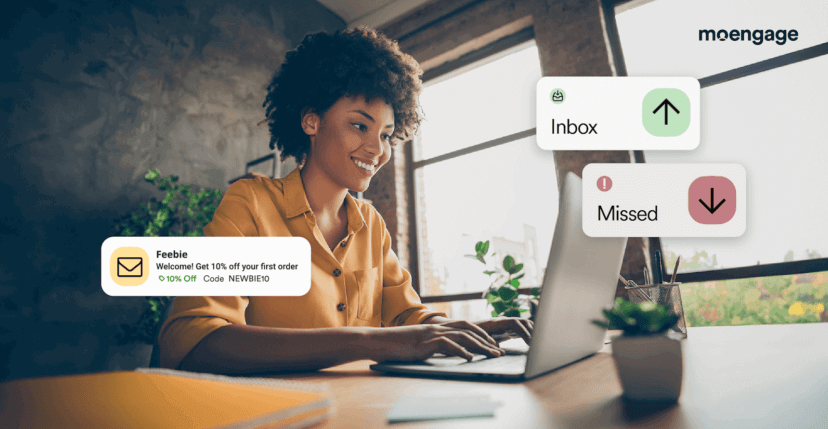
Marketers interested in knowing how to create an email newsletter must understand that email deliverability is different from email delivery. Delivery means the marketing newsletter has been sent to the subscriber. There’s no guarantee that it reached the inbox or the spam folder.
Deliverability, on the other hand, is the rate at which emails reach readers’ inboxes instead of spam folders. With billions of emails sent daily, an email landing in a subscriber’s inbox is half a battle won, increasing the chances of a subscriber opening it. Let’s find out how to improve email deliverability and compliance.
1. Best Practices for Email Deliverability
- Use proper protocols, such as Sender Policy Framework (SPF), DomainKeys Identified Mail (DKIF), and Domain-based Message Authentication, Reporting, and Conformance (DMARC), to verify the authenticity and identity of email messages and boost deliverability.
- Segment your subscribers based on behavior and preferences to send relevant emails at the right frequency.
- Update your subscriber list frequently by removing inactive ones.
- Avoid spam words and characters in subject lines.
- Use spam filters to remove spam languages.
2. Compliance With Local and International Regulations
In addition to following these email marketing best practices, brands must comply with email marketing regulations across geographies, such as the General Data Protection Regulation (GDPR) and the Controlling the Assault of Non-Solicited Pornography and Marketing Act (CAN-SPAM Act).
While the GDPR focuses on data privacy and individual rights, the CAN-SPAM Act curbs deceptive email marketing practices. Complying with these regulations will help brands earn trust and improve the deliverability of their email marketing campaigns.
3. Provide Clear Opt-in And Opt-out Options
Regulations like the CAN-SPAM Act and GDPR require brands to seek consent from subscribers to send emails, inform them about privacy practices followed and data stored, and keep opt-in and opt-out options accessible and straightforward. Here’s how brands can do it:
- Ask readers for consent to use their data for marketing.
- Allow readers to unsubscribe if they no longer wish to receive emails.
How to Build an Email Newsletter Your Subscribers Will Read
As you can see, email newsletters are an efficient way to share interesting articles, ideas, news, and information with readers directly.
However, learning how to create an email newsletter involves understanding your audience through segmentation, tailoring content to make it relevant, optimizing design for mobile marketing and other devices, and sending personalized emails.
All geared up? Why not try creating your own email newsletter next?
For that, choose an email marketing software that ensures your email newsletter gets delivered to your recipients’ inbox, instead of their spam folders. MoEngage, for example, has an all-in-one email marketing platform that can boost email delivery by 30%. It lets you create email newsletters as well as emails that are personalized based on customers’ behavior, preferences, future trends, and journey stages. And the drag-and-drop email builder makes it even simpler to create an email newsletter!
So, want to capture your readers’ attention and drive meaningful interactions via email newsletters? See MoEngage in action.



